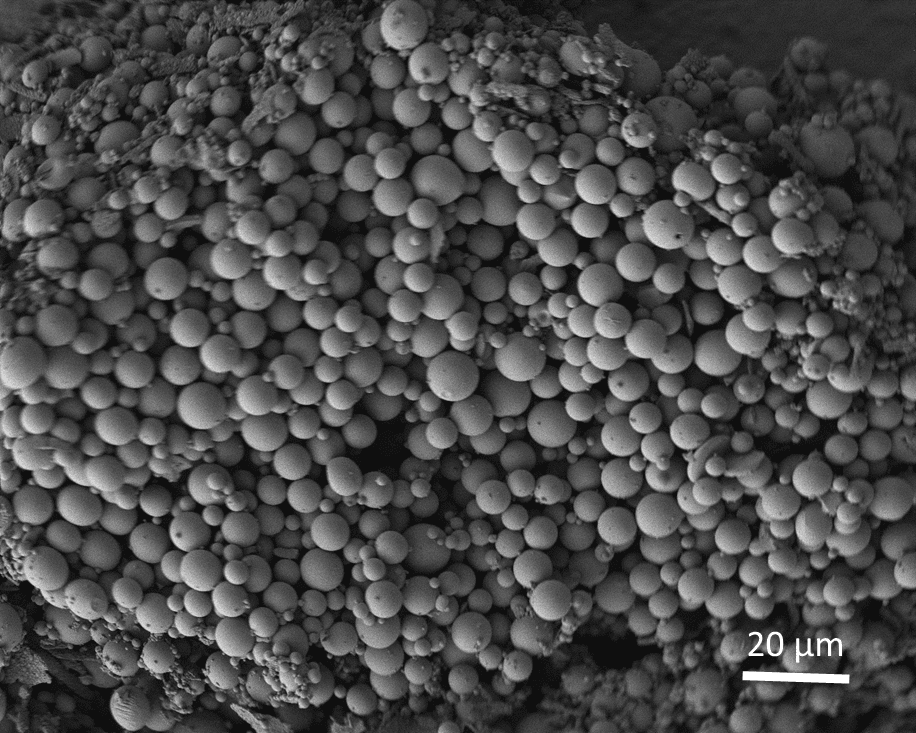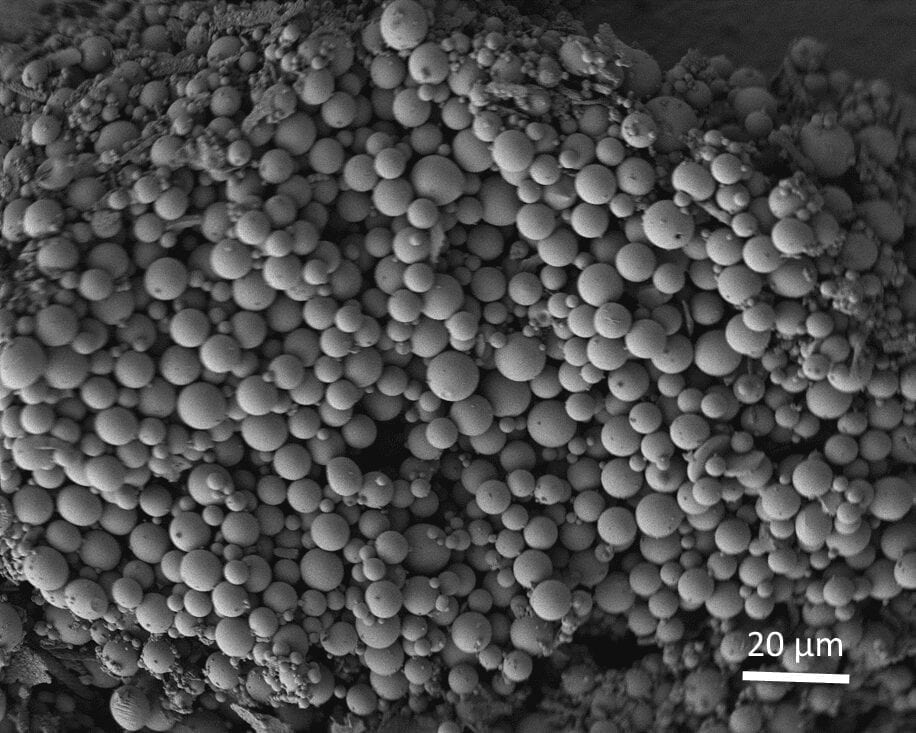
Researchers with the University of Florida and several other institutions have found a way in laboratory tests to use 200 times less insecticide and yet still kill as many insects that carry the devastating citrus greening bacterium.
It is a step forward in ridding groves of the insect that is threatening to destroy Florida’s $10.7 billion citrus industry.
Lukasz Stelinski, an associate professor with UF’s Department of Entomology and Nematology, used a commercial formulation of imidacloprid, a standard insecticide used in the industry to kill the Asian citrus psyllid, among many other pests. He and the team impregnated nano-dispensers, which are microscopic molecules that can contain liquids and then penetrate leaf and bark surfaces.
Using less insecticide could mean saving tens of thousands of dollars for small growers, a make-or-break figure for those who are struggling with stunted production and less or no profit due to the disease.
“During the past 15 years, an explosion in research in micro and nanotechnologies has led to the development of a variety of techniques that allows control of matter at microscopic levels never before seen,” said Stelinski, who works at the Citrus Research and Education Center, a unit in the University of Florida’s Institute of Food and Agricultural Sciences. “They have opened a new era in delivery of pesticides through the development of micro and nanosize controlled release systems.”
Polymer molecules are being employed for these nano-dispenser systems because scientists can change their size, depending on the use needed. They are compatible with living organisms, have a low cost and are about 500 times smaller than a human eyelash. Both synthetic and natural polymers play an essential role in most people’s lives every day, ranging from familiar synthetic plastics, such as disposable cutlery, to natural biopolymers like DNA and proteins – fundamental to human life.
Using insecticides is one of the few ways farmers currently have to treat their groves for greening, also known as Huanglongbing or HLB.
Citrus greening bacterium first enters the tree via the psyllid, which sucks on leaf sap and leaves behind greening bacteria. The bacteria then move through the tree via the phloem – the veins of the tree. The disease starves the tree of nutrients, damages its roots and the tree produces fruits that are green and misshapen, unsuitable for sale as fresh fruit or, for the most part, juice.
Most infected trees eventually die, and the disease has already affected millions of citrus trees in North America. It has recently been found twice in California.
Citrus greening was first detected in Florida in 2005. The citrus industry in Florida has lost approximately 100,000 citrus acres and $3.6 billion in revenues since 2007, according to researchers with UF/IFAS.
Although current methods to control the spread of citrus greening are limited to the removal and destruction of infected trees and insecticide-based management of psyllid populations, UF/IFAS researchers are working to defeat it on a number of fronts, including trying to reduce populations of the psyllid, breeding citrus rootstock that shows better greening resistance, and testing treatments that could be used on trees.
Stelinski’s team experimented with the nano-dispensers in the lab, replicating each treatment experiment five times. In the most successful version of the experiment, 80 percent of the psyllids were dead after 10 days. Researchers also said that less insecticide could have beneficial environmental impacts.
Read more: Microscopic molecules can fight citrus greening bug with less insecticides
The Latest on: Micro and nanosize controlled release systems
[google_news title=”” keyword=”micro and nanosize controlled release systems” num_posts=”10″ blurb_length=”0″ show_thumb=”left”]
via Google News
The Latest on: Micro and nanosize controlled release systems
- IFF Unveils Its Controlled Release Platform Featuring Its Innovation and Trailblazing Excipientson May 14, 2024 at 11:00 pm
As a result, controlled release dosage forms continue to gain prominence as one of the most dynamic delivery systems in the pharmaceutical landscape. For over 70 years, IFF Pharma Solutions has ...
- Key advantages of using biodegradable microspheres as targeted drug delivery systemson May 14, 2024 at 10:21 pm
Microsphere drug delivery technology provides a route for controlled release systems with high efficacy and reduced dosage regimens. The spherical shape and small particle size are unique to ...
- IFF Unveils Its Controlled Release Platform Featuring Its Innovation and Trailblazing Excipientson May 14, 2024 at 5:00 pm
As a result, controlled release dosage forms continue to gain prominence as one of the most dynamic delivery systems in the pharmaceutical landscape. For over 70 years, IFF Pharma Solutions has been a ...
- The Best Smart Lockson May 14, 2024 at 11:02 am
Smart integration Every smart lock has a companion app, but Amazon Alexa, Apple Home, and Google Assistant let you control locks and ... In 2021, BHMA launched a new system for residential locks ...
- The Best Smart LED Light Bulbs for 2024on May 12, 2024 at 5:00 pm
Why We Picked It Philips makes some of our favorite smart light bulbs, but its Hue LEDs are prciey. Starting at just $9.97, the Philips Dimmable A19 Smart Wi-Fi Wiz Light Bulb is a far more ...
- Advancing controlled-release drugs: Advantages of introducing biodegradable microsphereson May 8, 2024 at 3:33 am
This article explains the pivotal role biodegradable microspheres play in targeted drug delivery and howthey optimize therapeutic efficacy through controlled drug release while reducing the risk of ...
- The Best Electronic Keypad Door Lockon May 5, 2024 at 5:09 pm
The lock offers a wide array of customizations that others don’t have, such as volume control, language options, and a feature that automatically locks the door behind you. It can hold up to 25 ...
- Android versions: A living history from 1.0 to 15on April 25, 2024 at 5:00 pm
Explore Android's ongoing evolution with this visual timeline of versions, starting B.C. (Before Cupcake) and going all the way to 2024's Android 15 (beta) release ... system with more granular ...
- Top 6 Best Slow Release Iron Supplements in 2024on April 25, 2024 at 4:00 pm
Slow Fe iron supplement tablets feature a special controlled release system that delivers high potency iron to your body slowly, causing fewer digestive side effects. It is non-constipating ...
- Microgrid control systemson April 19, 2024 at 1:29 pm
pv magazine's market overview of Microgrid control systems (see full article from November 2019, Premium content, see web summary) presents international providers and their products. It is aimed ...
via Bing News











